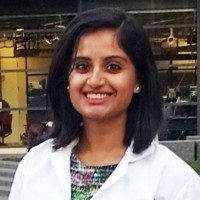Nisha Gopal is a dedicated Scientific Collaborator at Prakash Lab, Stanford University, where she plays a pivotal role in advancing diagnostic technologies through her expertise in biochemistry and neuroscience. With a PhD in Structural Biology from Stanford, under the mentorship of Dr. Axel Brunger, Nisha...
Nisha Gopal is a dedicated Scientific Collaborator at Prakash Lab, Stanford University, where she plays a pivotal role in advancing diagnostic technologies through her expertise in biochemistry and neuroscience. With a PhD in Structural Biology from Stanford, under the mentorship of Dr. Axel Brunger, Nisha has honed her skills in biochemical and molecular approaches to address complex neuroscience questions. Her extensive technical repertoire includes protein biochemistry, molecular cloning, cell culture, and advanced microscopy techniques, which she leverages to drive innovation in diagnostic reagent production.
Currently, Nisha is spearheading a critical project within the SnapDx initiative, focusing on the transition of PCR reagents, specifically the Isothermal DNA polymerase (Bst), from commercial procurement to large-scale in-house production. This strategic shift not only enhances the efficiency of the diagnostic process but also ensures the availability of high-quality reagents tailored for specific applications, such as amplifying parasitic DNA from Schistosomiasis target samples. Nisha has successfully established a robust pipeline for Bst expression and purification, achieving high-purity enzyme production with demonstrated specific activity.
As she refines the purification methods further, Nisha is committed to optimizing the performance of these diagnostic tools to improve disease detection and management. Her project management skills, combined with her analytical abilities and cross-cultural communication expertise, enable her to facilitate collaborative efforts across diverse teams. With a strong foundation in membrane protein X-ray crystallography and native protein purification, Nisha Gopal is poised to make significant contributions to the field of diagnostics, bridging the gap between fundamental research and practical applications in healthcare.







